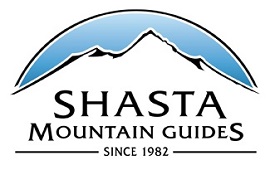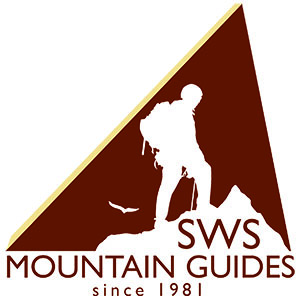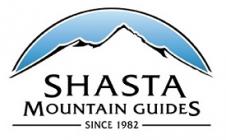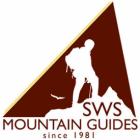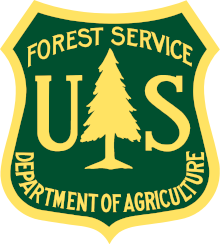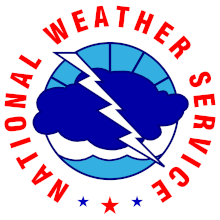You are here
Climbing Advisory
12-18-25 General Conditions & Climbing Information
The Bottom Line
Greetings Adventurers,
You have arrived at the BEST place on the internet for all things related to snow, avalanche, weather and climbing on Mount Shasta. If you like what we do and appreciate our info, the easiest way to show your appreciation is to DONATE HERE to our non-profit group that supports our program of work. Thank Yoouuu!
- Daily avalanche forecasts have commenced. For the latest and most current information, visit our avalanche forecast page. This forecast is updated daily. The climbing advisory page is updated periodically.
- Climbers: A winter climb of Mount Shasta should not be taken lightly. The ante is up and it's not uncommon to have multiple hazards to consider like extreme wind and temps, poor visibility, avalanche danger, icy, slide-for -life snow surfaces, rime ice fall and short daylight hours. All said, we don't want to discourage a grand adventure and are happy to help plan properly. Give us a call in the office at 530-926-9617. Leave a message, we will call you back!
- The Everitt Memorial Highway (EMH) is closed at Bunny Flat. You can still drive to Bunny Flat trailhead and the trailhead is open.
- Panther Meadows campground is CLOSED for the season
- Wilderness trailheads accessed by dirt roads (North Gate, Brewer Creek, Clear Creek, Sand Flat) have all been buttoned up for the winter. You can still access the trailheads/mountain via roads/routes, but expect snow covered roads and extended access as the winter snowpack builds. As of 12.18.25, you can still drive to all trailheads. This may change soon!
- Please put in the extra effort to keep your public lands clean and recreate responsibly. Leave no trace!
******Mt Shasta Web Cam LIVE LOOK!******
Don't take Mount Shasta lightly. Despite being only 15 minutes off the Interstate, it's a real mountain with real hazards. It can kill you, even the easiest route. While often a friendly snow climb, the mountain can raise its hackles, especially in winter. You need to recognize mountain hazards and be honest with your skills and ability. The lower half of the mountain is mostly friendly terrain. The upper half is game on. Rescue is always possible, but not always when you want it. Weather, location and time of day are key factors that contribute to a timely rescue. Be prepared. An ice axe, 12-point crampons, helmet, avalanche beacon, shovel and probe are minimum equipment necessary. Proper clothing is also essential. Sometimes a small injury can be a big problem if you don't have the clothes to hang out and wait for rescue. Hypothermia is a legit concern.
WEATHER: As always, check the weather before you climb. Click here for the Bunny Flat Trailhead point forecast and here for the Mount Shasta Recreational forecast. The mountain can create its own weather. Cloud caps, lenticulars, spaceships...whatever you want to call them, can shround the upper mountain on what may seem like a clear, blue sky day. Once you gain the summit plateau, it is easy to become lost in the clouds and accidentally descend the wrong side of the mountain. It happens every year, and can result in lengthy SAR missions. Always carry navigation tools...doesn't matter what you use, just know how to use it...and the bottom line here...don't climb into a whiteout!
Top mountain hazards to consider, in order for most common, include:
- Icy Surfaces, Slip and Fall - The lower half of the mountain is pretty friendly terrain. The upper half is the meat and potatoes. Long, sliding falls on hard surfaces don't turn out well. It's essential to carry an ice axe, crampons and helmet...and know how to use them. Practice self-arrest on a slope of non-consequence before taking on bigger terrain. Self-arrest is a move that needs to happen FAST. Once you are up to speed, it's very difficult to stop. Click here for an introductory video on how to self arrest.
- Poor Weather - climbers ascend into poor weather, white-out conditions and become lost on the upper mountain. Carry navigation equipment just in case, but first and foremost, don't climb into a white-out!
- Rock and ice fall - Ice fall is most common in the early spring when the mountain sheds it's winter coat. Any rime ice you might see plastered on exposed rocks will flake off and fall onto climbers below. Wear a helmet! Later in the season, rock fall becomes more common as snow melts and loose rock becomes exposed. It's a simple equation...as snow melts, chances for rockfall increase
- Avalanches - As they say in California, if you don't like the weather, wait 10 minutes. Mt Shasta weather can bring it all. Pay attention to any recent storm snow, as well as the days after when wind can move snow around very efficiently. It doesn't have to be snowing for their to be avalanche danger. We always advice carrying an avalanche beacon, shovel and probe for any winter adventures. Should you choose not, at least carry a shovel if snow camping.
One of the best skills to have in the mountains is flexibility! Conditions can change daily. Be honest with your skills and abilities. Plan and prepare properly. Be willing to turn around if you're not feeling it. Pick good partners. Don't get summit fever!
As always, feel free to give us a call to help plan your Mount Shasta adventure. There is something for everyone!
Conditions Update
A winter climb of Mount Shasta is the real deal. Above 9,000 feet is where our snowpack begins. Below is devoid of snow. An ice axe, crampons and helmet are necessary equipment for anyone traveling on the upper mountain, regardless of route. It's a salt and pepper mix of snow and rock. Check the forecast page for the latest.
Trailhead Access Information
Trailheads are buttoned up for the winter. You can still access them, with a few caveats:
- Bunny Flat is open. Clear Creek, North Gate and Brewer are closed, but still accessible as of 12.18.25. .
- Get your summit pass, wilderness permit and wag bags at the Mt Shasta or McCloud Ranger Stations, self-serve 24/7/365
- Roads may be covered in snow, prolonging approaches to trailheads
CHECK THE WEATHER
- Sometimes small storms create more trouble than larger storms as climbers think they can "sneak" up to the top and "it won't be that bad...". This often leads to becoming lost and descending the wrong side of the mountain. We can't say it enough: DON'T CLIMB INTO A WHITEOUT and play it safe when the weather is inclement.
Note that Redbanks is NOT almost the top
- At 12,500 feet, you still have 1,700 vertical feet to go. Use Redbanks as a solid check in point with yourself and your group: How is the weather? What time of day is it? How are we feeling? Once you commit to the upper mountain, conditions change, wind can be extreme, temps colder and cloud caps are possible limiting visibility. It catches climbers off guard every year. Make good decisions!
Bunny Flat:
- The gate is closed at Bunny Flat. Campers may use the parking lot, but please avoid setting up a large base camp. Keep it tight and leave room for others. Please do not have fires in the parking lot, unless you plan to use a fire pan, solo stove, etc. There are bathrooms and trash service, but no water is available. Skiing and snowmobiling from Bunny Flat is not possible right now.
The Sierra Club Alpine Hut (formerly Horse Camp) is OPEN, the fresh water spring is running, but the composting toilets are CLOSED. Expect to melt snow for water elsewhere on the mountain. Bring extra stove fuel! Camping is permitted on Sierra Club land, but NOT in the hut. A nominal donation fee is asked if camping on their land ($3/bivy or $5/tent). For more information visit their website at https://www.sierraclubfoundation.org/shasta-alpine-hut-mount-shasta.
Visit our observations section for the latest photos, etc. Ridge routes are best climbed early season. They melt out quickly and become a loose, rocky mess. Ridge routes are in poor shape currently.
You are REQUIRED to pack out your human waste within the Mount Shasta Wilderness. Please pickup a FREE human waste packout bag at the ranger stations or open trailheads before hitting the hill.
Please read all the information below to educate yourself on general information about what it takes to climb Mount Shasta safely. If you have further questions, don't hesitate to give us a call. We are not always in the office, but will respond as soon as we can: 530-926-9614 or email nicklaus.meyers@usda.gov.
Be Prepared
Our goal is to ensure you have a positive wilderness experience and come home in one piece. To do so:
- BE PREPARED
- DO YOUR RESEARCH
- ALWAYS WEAR A HELMET
- KNOW HOW TO USE YOUR ICE AXE & CRAMPONS.
- CARRY PROPER NAVIGATION TOOLS AND KNOW HOW TO USE THEM
- REMEMBER, YOU ARE RESPONSIBLE FOR YOUR OWN SAFETY.
Accidents and Hazards
Many incidents occur on the mountain every season. The most common accidents include rockfall injuries, lost climbers, and slips and falls in steep terrain. Most accidents can be prevented with proper planning and preparation.
- Do not climb into a whiteout. Always carry a map and compass and/or GPS device and route plan ahead of time.
- Keep your group together. If you split up, have a solid plan and make sure everyone has proper equipment and knows the way.
- Do not glissade with crampons on. If you choose to glissade, take OFF your crampons and make sure the snow is soft.
- Know how to self-arrest properly with your ice axe. A slip and fall on the upper mountain can be fatal.
- Wear a helmet and watch out for rockfall. Climbers get hit every year.
With the right knowledge, skill, equipment, and decision-making, these accidents can be easily prevented. Please, wear a helmet, and know how to use your ice axe and crampons any time of the year.
There is always the potential for thunderstorms during the summer months to shroud the mountain in clouds, limiting visibility. Climbers becoming disoriented on the upper mountain in whiteout conditions and subsequently descending the wrong route is not uncommon. These kinds of scenarios have resulted in many searches over the years. It should go without saying, but we will say it as a solid reminder: Check the weather before you go, and continue to monitor the weather as you climb. DO NOT CLIMB INTO A WHITEOUT! Being caught on the mountain in any type of weather can compromise life and limb.
Understand that if something goes wrong or a member of your climbing party gets injured, you need to be prepared to self-rescue. If you have an emergency on the mountain, call 911. Be prepared to provide your location and the nature of the injury.
Many hazards exist in mountain terrain. Some of these include:
- Ice and rockfall
- Altitude
- Extreme weather
- Avalanches
Icefall and rockfall are possible year-round. It's a simple equation: as snow melts, rockfall increases. If rime ice is plastered to exposed rocks above, it will eventually flake off and fall onto climbers. Wear a helmet and keep your eyes upslope as you climb. Pay attention to other climbers: rockfall is often caused by climbers resting in melted out areas and accidentally dislodging rocks onto slopes and climbers below. Be careful not to kick rocks down onto others.
At the height of 14,179 feet, Mount Shasta is a high altitude peak. It is common for climbers to experience acute mountain sickness (AMS) with signs and symptoms of nausea, headache, and lightheadedness. Despite being a common condition, AMS should not be taken lightly. It can quickly develop into a much more serious and potentially deadly pulmonary or cerebral edema. Rest and hydration are vital to alleviating AMS symptoms. If these symptoms do not improve, your only choice is to descend!
Mt Shasta is a 14, 179-foot volcano with steep slopes, avalanches, glaciers, rockfall, altitude, and extreme weather. Some may feel like Mt Shasta is "safe" due to its proximity to Interstate 5 and its "easy" climbing objective connotation. This is false. One should still expect cold, winter-like conditions at any time of year. Have the appropriate gear AND skill level. Mountaineering is dangerous, and climbers must constantly evaluate the terrain, weather, and many other factors to have a safe trip. One should also not expect immediate rescue. Many factors can prolong rescues. Thus, it is necessary, no matter what mountain of the world, that you be prepared.
Mountain Weather
Check the WEATHER FORECAST before coming up onto Mt. Shasta! Our site's main menu hosts numerous resources on the weather. Researching the mountain weather should be an important part of your trip planning.
Clouds and Precipitation: While you may encounter fair weather at lower elevations, cloud caps can form up high. Never climb into a whiteout, as many climbers have become lost or died in similar conditions. Many routes from all aspects of Mt. Shasta converge on the upper mountain (>12,500 feet). During limited visibility conditions, climbers have descended the wrong side of the mountain. Keep an eye on the sky as you climb, turning around if clouds begin to build on or near the mountain.
Lightning: Mt. Shasta is a 14,000-foot lightning rod and is frequently hit by lightning (usually in summer and fall months), so don't push your luck with building thunderheads.
Wind: Winds can reach over 100 mph at tree line (8,000 ft) and much higher in the alpine region. Winds of 40 mph can knock you off balance. Winds of 60-70 mph can force you to crawl. Hurricane strength winds (>74 mph) can make it nearly impossible to stand and will destroy well-anchored tents. The strongest winds occur with big pressure and temperature gradients in the atmosphere and tend to occur in front of and behind storms. The lowest winds occur when the center of high pressure is over the Mt Shasta area. Take this seriously as the wind has resulted in searches, injuries, and fatalities.
Tips & Notes
Climb early and descend early. This limits exposure to inclement weather (afternoon buildup of clouds is common), allows plenty of time to descend before dark and allows a rescue effort to ensue before dark if one gets injured or lost.
Get an alpine start (2-5 am) and have a turnaround time of 12 to 1 pm. Proper equipment, clothing, and training are a must. Helmets are always recommended and expect rock and ice to fall at any time.
Bring extra warm gear (like a down jacket, balaclava, and extra gloves) in all seasons as climbers often develop superficial frostbite during strong winds. The wind chill temperature near the summit in winter and spring can be well below zero.
Anchor your tent well wherever you camp. Tents can and do blow away frequently. Do not plan to camp above treeline if you do not have anchor lines for your tent.
Solo climbing is not recommended. Traveling with an experienced group is a good idea, and remember - do not split up the group!
The routes on the north and east sides are not recommended for unguided novices; glacier travel and route finding skills are prerequisites.
Mountain Rescue
Do not expect to be rescued. Rather, prevent rescues from happening in the first place, and be prepared to handle rescues within your climbing party should something happen. Nature sets its own terms, and YOU must judge how much risk you are willing to accept.
When to Climb
The BEST time to climb Mt. Shasta is usually from May to mid-July on the south and west sides of the mountain when summer days are longer and the weather is generally stable. However, in dry years, the thin snowpack creates the best climbing conditions in April, May and early June. When the snow melts, you are left with 7,000 feet of scree, talus, and boulders. In heavy snow years, the climbing season extends to August or September. There is NO trail to the summit. Climbing is much safer and more fun on consolidated snow.
A winter climb of Mt. Shasta is possible. Still, it is more difficult and dangerous: extreme weather, short days, avalanches, falling ice and potential post-holing increase the difficulty and danger on all routes. If you choose to travel in the backcountry during the winter and spring, you need to have the proper equipment and training to stay safe. An avalanche beacon, shovel, probe, with the ability to identify avalanche terrain and snow instability, is essential. A climb of Shasta should not be taken lightly.
Every year, many climbers become lost, injured, or killed while attempting Mt. Shasta. Many of these accidents could have been prevented with a bit of pre-planning and training. YOU need to come prepared.
What to Bring
- MANDATORY: wilderness permit, summit pass, human waste pack-out bags. Available for self-issue at all open trailheads.
- THE TEN ESSENTIALS: map and compass, sunglasses and sunscreen, extra food and water, extra clothing, headlamp/flashlight, first aid kit, matches/lighter, stove, knife/multi-tool, bivouac sack.
- HELMET, ICE-AXE, & CRAMPONS
- AVALANCHE BEACON, AVALANCHE PROBE, SHOVEL
Wilderness permits, summit passes, and pack-out bags are currently available at Bunny Flat, the Mt. Shasta and McCloud Ranger Stations and The Fifth Season outdoor store in Mount Shasta City. The Mount Shasta and McCloud Ranger Stations are typically open Monday through Friday from 8 to 4:30 PM. Check our climbing regulations for more details.
Winter and Spring months usually see periods of heightened avalanche danger, though this danger could exist in the summer months under the right circumstances. Research the weather and avalanche danger while planning your trip. Have your climbing party bring avalanche beacons, probes, and shovels armed with proficient skills in their use. Know how to identify avalanche terrain and evaluate snowpack stability.
Shasta Alpine Hut (formerly Horse Camp)
The stone cabin at treeline on the Avalanche Gulch climbing route is open year-round and all are welcome. However, one cannot sleep inside the cabin, except in emergencies. The composting toilet is CLOSED for the season. If you plan on camping a nominal $3/bivy and $5/tent fee is asked. There is a fee deposit tube inside the cabin. This fragile area gets a lot of use. Please practice Leave-No-Trace principles. Lastly, the property owner, the Sierra Club Foundation, manages its property under the Mt. Shasta Wilderness rules – dogs, horses, and other domestic animals are not allowed. No drones. Thanks! For more information or to contact, visit: https://www.sierraclubfoundation.org/shasta-alpine-hut-mount-shasta
Dogs
DOGS, AND OTHER DOMESTIC ANIMALS, ARE NOT ALLOWED IN THE MT. SHASTA WILDERNESS OR WITHIN THE SIERRA CLUB FOUNDATION PRIVATE PROPERTY (Shasta Alpine Hut).




